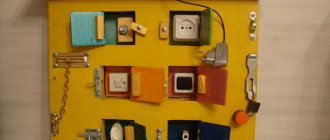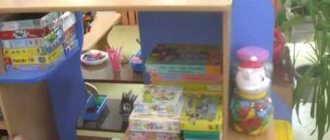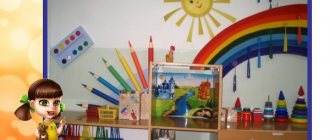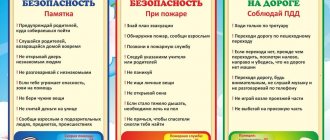The recommended duration of daily walks is in dou
Vending machines.
For additional food, you can install vending machines for selling finished products. They can sell juices, nectars, sterilized milk, drinking water, nuts other than peanuts, dried fruits and flour products in separate packaging. Products must have quality certificates and comply with storage conditions and periods. Vending machines need to be washed and disinfected when they become dirty, but at least twice a month.
Children's duty.
Children may be allowed to be on duty in the kitchen: peeling and cutting raw vegetables, slicing bread, setting and cleaning the table, washing dishes under adult supervision. Children should wear aprons and hats when working in the kitchen.
More prohibited products.
The list of prohibited products has been expanded. It contains all the products from the old list, as well as concentrated diffusion juices, dishes made from (or based on) dry food concentrates, including instant food, potato and corn chips, snacks, curd cheeses, milk and milk drinks sterilized less than 2, 5% or more 3.5% fat content; fermented milk drinks with less than 2.5% and more than 3.5% fat content, ready-made culinary dishes not included in the current menu, sold through buffets.
The daily routine includes:
The duration of continuous direct educational activity for children of the 4th year of life is no more than 15 minutes, for children of the 5th year of life - no more than 20 minutes, for children of the 6th year of life - no more than 25 minutes, and for children of the 7th year of life years of life - no more than 30 minutes. The maximum permissible amount of educational load in the first half of the day in the junior and middle groups does not exceed 30 and 40 minutes, respectively, and in the senior and preparatory groups 45 minutes and 1.5 hours, respectively. In the middle of the time allotted for continuous educational activities, a physical education session is held. Breaks between classes are at least 10 minutes.
Direct educational activities with children of senior preschool age can be carried out in the afternoon after naps, but not more than 2-3 times a week. Its duration is no more than 25 - 30 minutes a day. Direct educational activities on the physical development of children aged 3 to 7 years are organized at least 3 times a week.
- in the younger group - 15 minutes,
- in the middle group - 20 minutes,
- in the senior group - 25 minutes,
- in the preparatory group - 30 minutes.
Children of preschool age who do not have contraindications for health reasons are allowed to go on walks and excursions.
When conducting walks and excursions, it is necessary to follow the rules of behavior, established modes of movement and rest.
A group of pupils must be accompanied by two adults and must have a first aid kit with a set of necessary medications and dressings.
Participants of a walk or excursion must wear comfortable clothes and shoes that do not restrict movement and are appropriate for the season and weather. To prevent injuries and bites to your feet, wear pants or stockings.
Maintain discipline and follow all instructions from the manager.
The total duration of the walk and excursion is 1-3 hours.
During rest stops, to avoid burns and forest fires, do not light fires.
Do not taste any plants, fruits or mushrooms.
Do not touch poisonous and dangerous animals, reptiles, insects, plants and mushrooms, as well as thorny plants and shrubs with your hands.
When moving, do not take off your shoes and do not walk barefoot.
To avoid infection with gastrointestinal diseases, do not drink water from open, untested reservoirs; use drinking water, which you must take with you, or boiled water. Observe the rules of personal hygiene, promptly inform the leader of the walk or excursion about deteriorating health or injuries.
Respect local traditions and customs, take care of nature, historical and cultural monuments, personal and group property.
At the end of the walk or excursion, you must check the list of students in the group.
- Sychev, Pavel Predators. Theory and practice of raider attacks / Pavel Sychev. - M.: Alpina Publisher, 2011. - 184 p.
- Matskevich, I.M. Organization of scientific activities and implementation of scientific work in jurisprudence. Scientific and practical manual / I.M. Matskevich. - M.: Prospekt, 2022. - 915 p.
- General theory of state and law. Academic course in 3 volumes. Volume 2. - Moscow: Mir, 2002. - 528 p.
- Matuzov, N.I. Theory of State and Law / N.I. Matuzov, A.V. Malko. - M.: Publishing house "Delo" RANEPA, 2011. - 528 p.
- Scientific and practical commentary to the Federal Law of May 31, 2002 No. 63-FZ “On advocacy and the legal profession in the Russian Federation” (article-by-article); Yurkompani - M., 2012. - 520 p.
Norms for walks in children. gardens
| № | Child's age | Duration of sleep per day | Number of naps during the day |
| 1 | From 3 to 7 years | 12 hours | 1 time up to 3 hours |
| 2 | From 1.5 to 3 years | 12.5 hours | 1 time for at least 3 hours |
| 3 | From 1 to 1.5 years | 12.5 hours | 2 times up to 3.5 hours |
The duration of a walk in kindergarten is at least 3–4 hours a day. Time may vary depending on weather conditions or is divided into 2 walks.
Meals in kindergarten are organized depending on the time spent in the group. If the child is in the garden full day (10 - 12 hours), he needs to be fed every 3 - 4 hours. For pupils of short-stay groups (no more than 5 hours), one meal is provided.
Preschool teachers should conduct developmental activities with children. SanPiN fixes their duration. The duration of classes depends on the age of the children.
| № | Children (age) | Continuous lesson time (min) | From 8.00 to 12.00 (min) | From 15.00 to 19.00 (min) |
| 1 | From 6 to 7 | 30 | 90 | 30 |
| 2 | From 5 to 6 | 25 | 45 | 25 |
| 3 | From 4 to 5 | 20 | 40 | – |
| 4 | From 3 to 4 | 15 | 30 | – |
| 5 | From 1.5 to 3 | 10 | 10 | 10 |
To improve the health of minors, physical education lessons should be conducted during the day in kindergarten. They include a massage and a list of exercises. The duration of morning exercises depends on the age of the child.
Physical education lessons are held 3 – 4 times a week. For minors from 5 to 7 years old, one lesson must be held outside.
The duration of gymnastics depends on the age of the children and coincides with the time of continuous classes. Additionally, as part of the recovery, it is possible to organize hardening lessons.
The food unit in a kindergarten should be located in a separate room. All equipment is subject to mandatory labeling.
Washing dishes in kindergarten is a process that, according to SanPiN, is regulated in as much detail as possible. After cleaning the dishes from food residues, the items are washed in two sinks, without using detergents, dried and stored on special racks at a height of 35 cm from the floor. Metal utensils must be additionally calcined in the oven.
Dishes for children and for staff are stored separately.
Particular attention is paid to the drinking regime in preschool educational institutions. Water must meet safety requirements and be bottled. The specified storage period must be observed. In extreme cases, it can be boiled. But its shelf life is no more than 3 hours.
Sanitary norms and rules provide for regular treatment of premises against mold. For this purpose, all walls in rooms with high humidity are covered with tiles.
SanPiN even stipulate the color of the walls in preschool educational institutions. On the north side there are warm colors, on the south side there are cold colors.
Each group is equipped with individual compartments for children’s outerwear and a place for parents’ clothing. The nursery has an additional space for breastfeeding and a changing table.
SanPiN sets standards for the size of high chairs for children depending on their age category. Furniture is subject to mandatory marking.
Approximate daily routine for a preschooler
7.00-8.30 - Reception of children 8.10 - Exercise 8.30 - Breakfast 9.00-10.00 - Classes 10.30-11.30 - Walk 12.00 - Lunch 12.30-15.00 - Day nap 15.30 - Afternoon snack 16.00-17.00 - Classes 17.00 - Pro party 18:00 - Dinner 19.00 - Care children home
As can be seen from the schedule, according to the recommendations of SanPiN, a kindergarten pupil is provided with four meals a day, with an interval of 4 hours between meals, there are also two walks, one of which is in the afternoon (the time of which may be reduced due to weather conditions), in addition, it is mandatory nap, and of course there is time for activities and games.
It is worth noting that there are slight differences in the daily routine of each group in kindergarten, which take into account the age characteristics of the children.
For example, if the duration of classes in the junior group of a kindergarten is only 10 minutes, then preschoolers of the senior and preparatory groups study for 20-30 minutes, which is close to school classes. The same applies to preparatory moments and getting ready - older children need less time to get dressed for a walk, or wash their hands before lunch.
Next, we will look at several important points from the daily routine in kindergarten in more detail.
SanPiN for preschool educational institutions as amended for 2022
Hygiene requirements for personnel include strict conditions that must be met:
- Each employee must have at least 3 sets of spare clothes.
- Personal clothing must be clean, nails must be cut short, outerwear and shoes must be stored in the staff room.
- Smoking, wearing earrings and rings is prohibited.
- Teachers and nannies must wear light-colored coats.
- Each employee is required to undergo a medical examination in a timely manner.
- Kitchen workers are inspected daily.
Each employee must have a health certificate.
The current SanPiN establishes the requirements for kindergartens in as much detail as possible. Compliance with most conditions is mandatory for all employees of the organization. The changes made tighten the rules for the administration of preschool educational institutions. Home family groups are exempt from their execution.
Sanitary and epidemiological institutes are constantly working to improve the functioning of preschool educational institutions. And such events are aimed at increasing the safety of children, as well as improving the learning and development of children. In this connection, the current edition of SanPin is subject to constant changes.
Table No. 1 “Main amendments that entered into force SanPin for kindergartens in 2022”
| Before | After |
| Prohibition on ventilating premises in the presence of children | One-way opening of windows is allowed if there are pupils in the group, but only in hot and windless weather |
| Lack of distribution of food intake by age of children | Increasing the number of dishes consumed and establishing norms of nutritional value for each age category |
| Strict fixation of temperature conditions: 19 – in the bedroom, 22 – in the playroom | Increasing limit values |
Special attention is given to the nutrition of children in kindergartens, since food is one of the main causes of the spread of infectious diseases. Thus, in 2022, an educational institution will be assigned the following responsibilities:
- choosing a reliable supplier;
- compliance with delivery rules;
- control over the unloading and quality of packaging of products;
- compliance with storage standards for food raw materials;
- following recipes for preparing dishes.
SanPin 2022 strictly defines the standards by which land plots are selected for the construction of a preschool educational institution. The main ones include:
- location within a residential complex or residential area;
- lack of industrial enterprises nearby;
- the noise level should not exceed the norm;
- measurement of air pollution;
- the possibility of natural lighting for outdoor play areas.
Walks and quiet time
These important components of the daycare routine are also age-appropriate.
Children from the early age group go for a walk earlier than others, at 9.00-9.30. The quiet hour has also been increased - babies sleep on average from 12.30 to 15.00.
Children from the senior group and the preparatory group go to a quiet hour at 13.00; their sleep lasts an average of 1.5 hours. They also have a shorter time to prepare for a walk - children at this age can already independently and quickly change clothes for playing in the fresh air.
However, regardless of age, quiet time in kindergartens ends at 15.00. After afternoon tea, the younger groups have a general education lesson; students from the middle and older groups are engaged in games or independent activities.
During the second walk, the children are gradually picked up by their parents. In winter, due to the fact that it gets dark quite early, the time for the second walk is reduced, and children are taken directly from kindergarten. Also, the walk may be shortened due to weather conditions: for example, frost or strong wind.
SanPin requirements for organizing a walk in a dhow
Control over the formation of comfortable conditions for the rest and development of children falls on the shoulders of educators, who must monitor the proper cleaning and preparation of playrooms and bedrooms for the reception of children. So, in addition to observing the temperature regime, it is necessary to control the air humidity and ventilation of the premises.
According to SanPin, all rooms in which children play, study or relax must be ventilated. And the procedure is carried out according to the following standards:
- at least twice a day for a maximum of 30 minutes with the formation of a draft, but in the absence of children;
- ends half an hour before the students arrive;
- unilaterally in the presence of children and only in hot, dry weather.
According to SanPin, air humidity in kindergarten rooms in 2021 should not rise above 60% and cannot be below 40. As for temperature, the following limit values are allowed:
- gaming within 21-24, the most optimal is 24 degrees;
- the bedroom ranges from 18-22, but 22 is best.
Kindergarten is the first step towards the comprehensive development of a child, so it is very important to organize the right approach to raising children. Thus, according to the established SanPin rules in 2022, the daily routine in a preschool educational institution should contain the following activities:
- exercises in the group room (should be carried out at least twice and the duration of the exercises depends on the age of the kids and should vary between 5-15 minutes);
- physical activity in the fresh air (which also includes active sports games);
- role-playing games in groups that require active participation;
- swimming (if the kindergarten has swimming pools);
- training sessions (the duration of one block of developmental sessions should not exceed ten minutes and should be replaced by other types of activities);
- physical education (includes several simple exercises).
As for training lessons, they include:
- familiarity with numbers and letters;
- art classes;
- music and choreography;
- modeling from plasticine;
- making crafts from natural materials;
- development of logic and memory.
The teacher is required to be able to correctly distribute all types of employment in order to equally pay attention to all types of activities.
Maintaining order in groups is one of the main areas monitored by the sanitary and epidemiological service in kindergartens in 2021, especially during the period of widespread spread of various infections. So, a soap-soda solution is used as a detergent if additional disinfection is necessary. The use of detergents is allowed, but only those that are not harmful to health.
Most often, baby soap is used to clean and wash toys. It applies:
- for washing floors;
- when cleaning door handles, tables and chairs;
- while washing windows;
- in cases of washing clothes and toys.
In addition, air and power vacuum cleaners are used to clean carpets, mattresses and pillows.
The most important task of kindergarten teachers is to teach children to walk in any weather.
It is important that the child, while in the fresh air, is always dressed appropriately for the temperature.
The amount of time during which the walk should be carried out depends on the weather conditions and temperature outside the window.
During the day, preschoolers should walk outside for 3 to 4 hours. That is, according to the standards, one walk should take from 1.5 to 2 hours.
Moreover, if the temperature of a walk in kindergarten according to SanPin is -15 ° C and the wind is over 7 m/s, the duration of children’s stay on the street can be reduced.
This recommendation is provided in clause 11.5 of SanPin.
Outdoor classes are not conducted under the following climatic conditions:
- at temperatures less than -15° C and wind over 15 m/s, for children under 4 years old;
- at temperatures less than -20 ° C and with winds over 15 m/s, if children are from 5 to 7 years old.
Thus, SanPin regulates walking in kindergarten in winter . However, all these conditions are advisory in nature.
In other words, the walk does not have to fit within the established temperature limits and correspond to the wind speed for each age group.
However, educators do not have the right to leave children without any walks in the fresh air.
In frosty, windy and rainy weather, the time spent outside may well be reduced.
When organizing walks, weather conditions, rational clothing for children and the selection of outdoor games should always be taken into account.
Outdoor activities for preschoolers have a positive effect on the emotional state, the development of communication and motor skills, and also accelerates the integration of children into the team.
- Physical exercises and games are mobile activities that can also include elements of competition.
- Observation. This component is especially interesting for both children and teachers. Observations are made of natural phenomena, birds, and what is happening around. Often, educators invite preschoolers to use observation to solve simple problems, find answers to riddles, etc.
- Creative tasks and developmental exercises are carried out using cards, gaming devices and other external material.
- Work. Children's walks in a preschool educational institution may also include simple work related to tidying up the territory - collecting fallen leaves, chestnuts, etc.
Depending on the location of the organization, two main types of walks can be distinguished: on the territory of the preschool educational institution and behind it. A walk around the territory of the kindergarten is carried out daily, but trips outside the preschool educational institution are carried out less often. Before carrying out such exits, it is necessary to take care of safety measures, especially if the students have to cross the roadway. To do this, the teacher first conducts conversations with the children and reminds them of the rules of behavior.
Themed walks in preschool educational institutions also come in various types:
- with characters are entertaining walks where the leader is a teacher dressed as a fairy-tale hero. Usually, on such walks, kids not only have fun, but also perform exciting educational tasks;
- events – held on holidays and usually include a number of thematic tasks;
- work walks are simple activities related to caring for the territory of the kindergarten, forming in children an awareness of the significance of their work;
- sports activities - active physical exercises, hardening, etc.
It includes the following structural components:
- independent games,
- creative and developmental activities,
- work activity,
- observations,
- physical exercise.
The sequence of these components is selected depending on what activity preceded the walk and what state the pupils are in (active, tired, etc.). The current pedagogical plan is also taken into account. For example, if children go outside after physical education in the gym, then the walk should begin with a quiet activity - for example, observation. If kids go out into the fresh air after a lesson, then it is better to start the walk with a game or active exercises.
Organizing a walk in a preschool educational institution involves drawing up a brief plan that lists the main types of activities, their sequence, duration and significance for the educational process. If the walk involves leaving the territory of the preschool educational institution, then the route must be prescribed.
According to SanPiN, the daily duration of walks in preschool educational institutions should be at least 3-4 hours. This time is divided into two parts: a walk in the first and second half of the day (after a quiet hour, before the pupils go home).
In winter, during strong winds or bad weather, the duration of walks is reduced or they are canceled altogether. Instead, physical exercises and active games are carried out in the gym.
A walk in kindergarten in autumn and winter is prohibited if the outside temperature is below -15 degrees, or there is a wind of over 15 m/s.
During walks in the fresh air, the teacher takes careful control over the activity of the children. Its task is to ensure children’s safety, teach them how to use outdoor aids, and instill an interest in the surrounding nature.
At the end of the walk, the teacher conducts a brief analysis of it and generates a report. The report reflects points such as:
- when and for how long the walk was carried out,
- how preschoolers behaved,
- what outdoor material was used for walks in kindergarten and for what purpose,
- what classes were held,
- in what mood the children came outside and returned to kindergarten.
Analysis of a walk in a preschool educational institution allows you to effectively identify shortcomings and missed components in order to adjust plans next time. Based on the results of the analysis, methodological recommendations are drawn up.
A well-organized walk allows you not only to satisfy the child’s body’s need for physical activity and fresh air, but also, first of all, serves the objectives of the comprehensive development of the child’s body and health promotion.
In accordance with the requirements, walks in kindergartens should take a total of three to four hours daily . Moreover, this time interval is set without indicating the age of the students.
Therefore, this recommendation applies to all groups. SanPiN clarifies that the mentioned period must be divided into two times. Most often, children walk in the gardens in the morning and evening.
Walks are provided all year round, both in warm and cold seasons. The rules establish advisory ranges for permissible temperatures. The document does not prohibit the organization of walks at temperatures above or below the established ones, since this norm is advisory.
Educators are required to objectively assess weather conditions and make decisions about going outside with children in accordance with what is happening outside the window.
According to the general requirements of SanPin for kindergartens, all norms and rules must be observed to the same extent, regardless of the organizational and legal form of the institution or the type of preschool institution.
At the same time, children's groups located in residential apartments or apartment buildings, so-called family groups, should not be guided by these rules.
In the latest changes to SanPin, the rules and regulations related to the daily routine of children in a preschool educational institution have been reduced by almost half. Continuous wakefulness of a child from 3 to 7 years old should not exceed 6 hours; for children under 3 years old, the norms are established depending on medical indications.
Daily walks should be at least 3-4 hours, only twice a day - before lunch and after naps. For each age, SanPin indicates the norm for the duration of sleep per day, which is on average 12 hours a day, of which at least 2.5 hours should be during the day.
According to SanPin, ventilation of the premises of children's groups must be carried out repeatedly, during the absence of children. The duration of ventilation depends on the air temperature outside the window and the quality of heating in the room.
Half an hour before children return to groups, ventilation should be stopped. In the warm season, ventilation is permissible in the presence of pupils; in this case, it is advisable to avoid drafts. The document contains a table that clearly indicates the duration of such procedures in a preschool institution. Read the instructions on how to fill out a personal card for issuing personal protective equipment.
Washing and treating toys in kindergarten according to SanPin must be done daily after children go home. In the youngest groups - twice a day. Toys intended for playing outside are washed immediately after returning from the street. It is also necessary to treat toys that have just been purchased; this must be done with a soapy solution for 15 minutes, then rinsed in clean water. The detergent used to treat toys must be safe for children.
In accordance with SanPin standards, bed linen in a kindergarten should be changed as it gets dirty, but at least once a week. Washing of linen and towels is carried out either in the laundry of a preschool educational institution, or by a special organization with which an agreement has been drawn up for the provision of laundry services.
In accordance with sanitary standards, each child in a kindergarten group must have an individual potty, and for children over 5 years old, personal toilet seats made of safe materials must be installed on the toilets. Pots should be treated immediately after use using detergents and disinfectants. Toilets are cleaned at least twice a day.
The SanPin for a swimming pool in a kindergarten clearly states what rooms should be near the pool and what they will be equipped with, as well as what kind of personnel is needed in the pool. Particular attention should be paid to cleaning and disinfecting the pool. If there is good water circulation in the pool, a complete water change should be done within 8 hours.
If there is no circulation, the water should be drained daily. Cleaning of the swimming bowl must be carried out by the employees responsible for it. Showers, toilets and locker rooms are cleaned every day. General cleaning monthly. It is necessary to monitor the quality of water in the pool once a day.
Flowers are planted in the kindergarten yard to separate play areas from utility areas. According to SanPin, fruit-bearing, poisonous and thorny plants cannot be planted.
The size of furniture in a kindergarten according to SanPin must be of the same group and correspond to the table given in the decree. Each height group of children must correspond to the size of the furniture.






